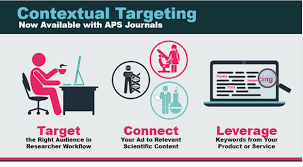Contextual advertising is a powerful digital marketing strategy that has revolutionised the way businesses reach their target audience online. Unlike traditional forms of advertising that rely on broad demographics or keywords, contextual advertising takes into account the context of a user’s online activity to deliver relevant ads in real-time.
At its core, contextual advertising works by analysing the content of a web page or app where an ad is to be displayed. By understanding the themes, topics, and keywords present on the page, advertisers can serve ads that are highly relevant to the user’s current interests and needs. This targeted approach not only increases the chances of engagement but also improves the overall user experience.
One of the key benefits of contextual advertising is its ability to reach users at the right moment with the right message. For example, if a user is reading an article about travel destinations in Europe, contextual advertising can display ads for flight deals or hotel bookings in Europe. This relevance increases the likelihood of conversion as it aligns with the user’s current interests.
Contextual advertising also offers advertisers greater control over where their ads appear. By targeting specific keywords or topics, businesses can ensure that their ads are displayed on relevant websites and apps that attract their target audience. This precision targeting not only improves ROI but also helps build brand credibility among users interested in specific niches.
Furthermore, contextual advertising can adapt to changes in consumer behaviour and market trends in real-time. By leveraging advanced algorithms and machine learning technologies, advertisers can continuously optimise their campaigns based on performance data and user interactions. This flexibility allows businesses to stay agile and responsive in today’s fast-paced digital landscape.
In conclusion, contextual advertising represents a dynamic and effective approach to reaching consumers online. By delivering tailored messages based on contextually relevant content, businesses can engage users at the right moment with compelling offers. As technology continues to evolve, contextual advertising will remain a valuable tool for driving targeted traffic, increasing conversions, and maximising ROI in the digital marketing realm.
7 Advantages of Contextual Advertising: Boosting Engagement and Brand Credibility
- Highly targeted ads based on user interests and behaviour.
- Improved relevance leads to higher engagement and click-through rates.
- Enhanced user experience by delivering ads related to current content.
- Greater control over where ads appear, ensuring alignment with brand values.
- Real-time adaptability allows for quick adjustments based on performance data.
- Cost-effective approach as ads are displayed to users with specific interests.
- Increases brand credibility by associating with relevant and quality content.
Challenges of Contextual Advertising: Control, Content, Targeting, Reach, Fatigue, and Intent
- 1. Limited control over ad placement on specific websites or apps.
- 2. Potential for ads to appear alongside controversial or sensitive content.
- 3. Difficulty in accurately targeting niche audiences with highly specialised interests.
- 4. Ad blockers and privacy concerns may impact the reach of contextual ads.
- 5. Ad fatigue among users who see repetitive or irrelevant contextual ads.
- 6. Inability to account for user intent beyond the current context, leading to missed opportunities for engagement.
Highly targeted ads based on user interests and behaviour.
Contextual advertising offers the significant advantage of delivering highly targeted ads based on user interests and behaviour. By analysing the context of a user’s online activity, such as the content they are engaging with or the keywords they are searching for, advertisers can create personalised ad experiences that resonate with individual preferences. This level of targeting not only increases the relevance of the ads being displayed but also enhances the likelihood of capturing the user’s attention and driving meaningful engagement. Ultimately, by aligning ad content with user interests and behaviour, contextual advertising maximises the effectiveness of marketing campaigns and improves overall ROI for businesses.
Improved relevance leads to higher engagement and click-through rates.
The improved relevance offered by contextual advertising plays a crucial role in driving higher engagement and click-through rates. By delivering ads that align closely with the user’s current interests and online activity, contextual advertising captures the attention of the audience more effectively. When users encounter ads that are directly relevant to their needs or preferences, they are more likely to engage with the content and take action by clicking through to learn more. This increased level of relevance not only enhances the user experience but also boosts the overall performance of advertising campaigns, resulting in higher engagement rates and improved click-through metrics.
Enhanced user experience by delivering ads related to current content.
By delivering ads related to the current content being viewed by users, contextual advertising enhances the overall user experience significantly. This proactive approach ensures that users are presented with ads that are directly relevant to their interests and needs at that moment, making the advertising experience more personalised and engaging. By aligning ad content with the context of the user’s online activity, contextual advertising not only increases the chances of capturing user attention but also adds value by providing relevant information or offers that are timely and meaningful. This tailored approach not only benefits advertisers by improving ad performance but also creates a more positive and user-friendly browsing experience for consumers.
Greater control over where ads appear, ensuring alignment with brand values.
Greater control over where ads appear in contextual advertising provides businesses with the opportunity to ensure alignment with their brand values. By targeting specific keywords, topics, or contexts, advertisers can choose to display their ads only on websites and apps that resonate with their brand ethos. This level of control not only helps maintain brand consistency and credibility but also enhances the overall user experience by presenting ads in relevant and meaningful contexts. Ultimately, this pro of contextual advertising empowers businesses to protect and promote their brand image while reaching out to their target audience effectively.
Real-time adaptability allows for quick adjustments based on performance data.
The real-time adaptability of contextual advertising enables businesses to make swift adjustments based on performance data, ensuring campaigns remain effective and efficient. By analysing user interactions and engagement metrics in real-time, advertisers can identify trends, opportunities, and areas for improvement promptly. This agility allows for instant optimisation of ad placements, targeting strategies, and messaging to maximise results and ROI. In today’s fast-paced digital landscape, the ability to make quick adjustments based on performance data is a crucial advantage of contextual advertising that empowers businesses to stay competitive and responsive to evolving market dynamics.
Cost-effective approach as ads are displayed to users with specific interests.
Contextual advertising offers a cost-effective approach to digital marketing by displaying ads to users with specific interests. By targeting individuals based on the context of their online activity, businesses can maximise their ad spend by reaching audiences who are more likely to engage with the content. This targeted approach not only increases the efficiency of ad campaigns but also reduces wasted impressions on users who may not be interested in the product or service being advertised. Overall, contextual advertising allows businesses to achieve higher ROI by focusing their resources on reaching users with relevant interests and increasing the chances of conversion.
Increases brand credibility by associating with relevant and quality content.
By leveraging contextual advertising, businesses can enhance their brand credibility by aligning with relevant and high-quality content. When ads are displayed alongside content that resonates with the target audience’s interests and needs, it creates a positive association that strengthens the brand’s reputation. By being present in the right context, businesses can establish themselves as authoritative and trustworthy sources within their niche, ultimately building consumer confidence and loyalty. This strategic alignment with quality content not only enhances brand perception but also increases the likelihood of engagement and conversion among users who value authenticity and relevance in their online interactions.
1. Limited control over ad placement on specific websites or apps.
One significant drawback of contextual advertising is the limited control advertisers have over ad placement on specific websites or apps. While contextual targeting aims to match ads with relevant content, there is a risk of ads appearing on websites or apps that may not align with the brand’s values or target audience. This lack of control can result in ads being displayed in inappropriate contexts, potentially damaging the brand’s reputation and diminishing the effectiveness of the advertising campaign. Advertisers must carefully monitor and adjust their contextual advertising strategies to mitigate this risk and ensure their ads are placed in suitable environments.
2. Potential for ads to appear alongside controversial or sensitive content.
One significant con of contextual advertising is the potential for ads to appear alongside controversial or sensitive content. Due to the automated nature of contextual advertising algorithms, there is a risk that ads may be displayed on web pages or apps containing inappropriate or offensive material. This mismatch between ad content and surrounding context can have serious repercussions for brands, leading to damage in reputation and credibility. Advertisers must navigate this challenge carefully to ensure their ads are not associated with content that goes against their values or brand image.
3. Difficulty in accurately targeting niche audiences with highly specialised interests.
One significant drawback of contextual advertising is the challenge of accurately targeting niche audiences with highly specialised interests. While contextual advertising excels in matching ads to relevant content, it may struggle to pinpoint users with specific and niche interests that may not be explicitly reflected in the context of a webpage or app. This limitation can result in missed opportunities to connect with valuable segments of the audience who have unique preferences or needs that are not easily discernible from the surrounding content. As a result, advertisers may find it difficult to effectively reach and engage these niche audiences through contextual advertising alone, requiring additional strategies or tools to address this conundrum.
4. Ad blockers and privacy concerns may impact the reach of contextual ads.
Ad blockers and privacy concerns present significant challenges to the reach of contextual advertising. As more users install ad blockers to avoid intrusive ads, the effectiveness of contextual ads is compromised as they may not even be displayed to the target audience. Additionally, growing privacy concerns regarding data collection and tracking practices in contextual advertising can deter users from engaging with such ads, further limiting their reach and impact. Advertisers must navigate these obstacles by prioritising transparency, respecting user privacy preferences, and exploring alternative strategies to ensure their messages are effectively communicated to their intended audience.
5. Ad fatigue among users who see repetitive or irrelevant contextual ads.
One significant drawback of contextual advertising is the potential for ad fatigue among users who are repeatedly exposed to repetitive or irrelevant ads. When users see the same ad multiple times or encounter ads that are not relevant to their interests, it can lead to a negative user experience and diminish the effectiveness of the advertising campaign. Ad fatigue can result in users ignoring or actively avoiding ads, reducing engagement rates and ultimately impacting the overall success of the marketing efforts.
6. Inability to account for user intent beyond the current context, leading to missed opportunities for engagement.
One significant drawback of contextual advertising is its limitation in accounting for user intent beyond the current context. This can result in missed opportunities for engagement as ads may not align with the user’s broader interests or needs. While contextual advertising excels at delivering relevant ads based on immediate content, it may overlook valuable insights into a user’s long-term preferences or purchasing intentions. As a result, businesses risk missing out on potential conversions and fail to fully capitalise on the diverse motivations driving consumer behaviour.



